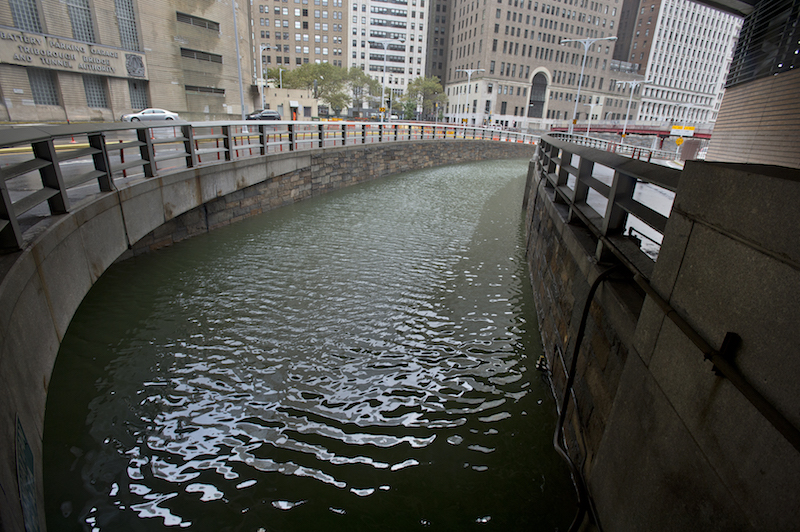The Federal Emergency Management Agency proposed regulations recently that would require owners using federal funds on construction projects in flood-prone areas to build on higher ground.
The proposal, stemming from an executive order signed by President Obama in January 2015 requiring a new flood-protection standard for infrastructure projects that use federal money, would prompt projects to be built as much as two feet higher in many cases.
Some business groups expressed concern that the regulations would drive up costs, and make rebuilding even more expensive. The regulations provide three options for construction projects using federal funds in flood-prone areas: build two feet above the 100-year floodplain level for standard projects, or three feet above for critical action projects such as hospitals or nursing homes; build to the 500-year floodplain; or use best available scientific models.
The regulations would “essentially rewrite the current 100-year flood standard that has been used nationwide for the past five decades,” the Washington Post reported. Up to now, to qualify for the national flood insurance program, communities have required that buildings be at or above the 100-year flood level.
Related Stories
| May 31, 2012
Natural gas industry opposes federal carbon-neutral construction rule
The natural gas industry and some allies are working to block a federal green building rule that was expected to be a national model for carbon-neutral construction.
| May 29, 2012
Reconstruction Awards Entry Information
Download a PDF of the Entry Information at the bottom of this page.
| May 25, 2012
Collapse of Brooklyn building that killed worker blamed on improperly braced frame
The Occupational Safety and Health Administration cited SP&K Construction with 11 safety violations, for which it could face more than $77,000 in fines.
| May 25, 2012
Study: Safety inspections don’t hurt the bottom line
A new study suggests that random safety inspections by regulators help reduce injury claims without hurting profits.
| May 24, 2012
2012 Reconstruction Awards Entry Form
Download a PDF of the Entry Form at the bottom of this page.
| May 17, 2012
New Zealand stadium roof collapse blamed on snow, construction defects
Heavy snowfall, construction defects, and design problems contributed to the collapse of the Stadium Southland roof in New Zealand in September 2010, a report has found.
| May 17, 2012
OSHA launches fall prevention campaign
The Occupational Safety and Health Administration (OSHA) recently launched an educational campaign to prevent deadly falls in the construction industry.
| May 10, 2012
Industry groups urge Congress to leave contracting decisions to agencies
An organization of several industry groups urged Congress to leave many contracting decisions to the discretion of individual agencies by avoiding blanket mandates.
| May 10, 2012
OSHA proposes new rule to have employers find and fix hazards
The Occupational Safety and Health Administration has proposed a new regulation, Injury and Illness Prevention Program, or I2P2, which would compel employers to find and fix safety hazards.
| May 3, 2012
OSHA reduces fines in Cincinnati casino collapse
The Occupational Safety and Health Administration has reduced the number of violations from four to two against four firms it cited earlier this month in the collapse of a casino under construction in Cincinnati.













